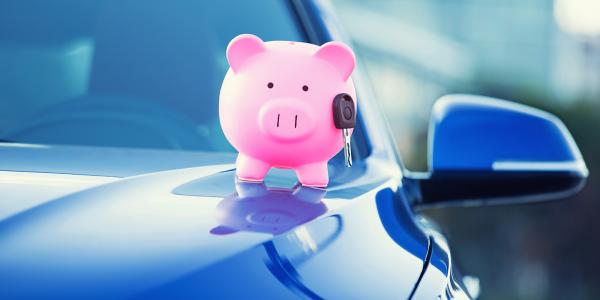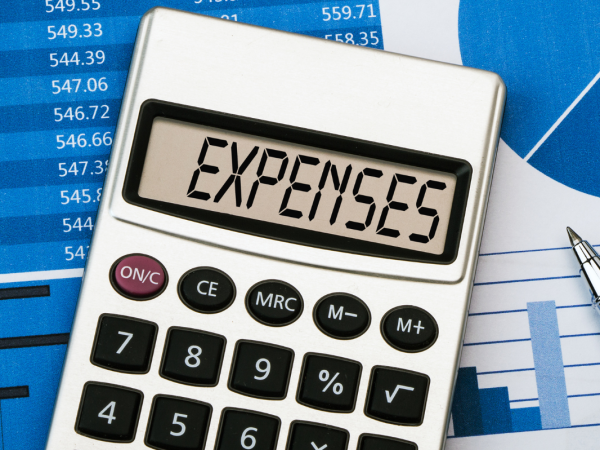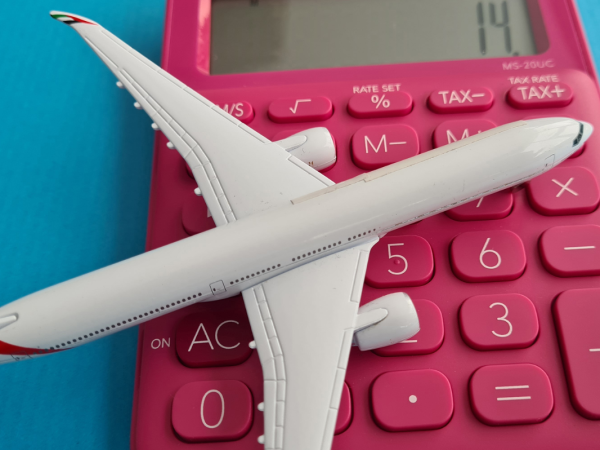Employment expenses: using your own car
We set out the main rules that apply when you use your own car or van for business travel. We consider other costs you may incur when travelling on business and how to claim tax relief on them in our general guidance on travel expenses.

Content on this page:
Introduction
One of the most common expenses incurred by an employee is travel for business purposes. This may involve you using your own car or van.
Some employers pay or reimburse mileage expenses when using your own car or van for business travel – this should be on a tax and National Insurance contribution (NIC) free basis and you do not have to claim relief.
You are entitled to tax relief for travel costs that you are obliged to incur in order to do your job. If your employer does not pay or reimburse these expenses at all, or fully, you may be able to claim a deduction from your income. You will only be able to claim tax back if you are a taxpayer.
Business travel includes trips such as travel from your office or place of work to visit your customers using your own car, motorbike, bicycle or van. It can cover travel from home to a ‘temporary workplace’ and also itinerant travel. For example, this may apply if you are a service engineer and move from place to place during the day.
You cannot generally claim tax relief for the expense of ordinary commuting – travel between your home and permanent place of work. If your employer pays or reimburses you for the cost of ordinary commuting (or other private travel), this is like having an additional salary paid to you, and your employer must deduct tax and NIC from the amount paid to you.
You can read more about which types of journeys you may be able to claim tax relief for on our page employment expenses: travel.
How to get tax relief
If you use your own car or van for business travel, there is the statutory system of tax-free approved mileage allowances available.
The maximum amount per business mile is known as the approved mileage allowance payment (AMAP).
As explained in the ‘Introduction’ above, your employer can pay or reimburse you up to these amounts on a tax- and NIC-free basis. They also do not affect universal credit awards. If your employer pays less than these amounts, you can claim tax relief for the unused balance of the approved amount (more on this in ‘If you are paid at a different rate or not at all’).
These rates also apply where an employee uses his or her own electric or hybrid car for business journeys (so not just to petrol or diesel cars and vans).
Approved mileage allowance payment (AMAP) rates
The approved mileage allowance payment (AMAP) rates are:
| First 10,000 business miles in the year | Each business mile over 10,000 miles in the tax year | |
| Cars and vans | 45p | 25p |
| Motorbikes | 24p | 24p |
| Bicycles | 20p | 20p |
If you have more than one job and your employers are not connected with each other, that is, the same people do not control each business, you can have a 10,000-mile limit for each job you hold.
If you have more than one job and your employers are connected with each other, you have only one 10,000-mile limit to be divided between all affected jobs.
The mileage rate covers the costs of running and maintaining the vehicle, such as fuel, oil, servicing, repairs, insurance, vehicle excise duty and MOT. The rate also covers depreciation of the vehicle.
If you are undertaking qualifying business travel in a company car, the rates that your employer can reimburse you up to on a tax/NIC free basis, are different (and depend on the type of fuel). See HMRC’s published advisory fuel rates for further information.
If you are paid at a different rate or not at all
If your employer pays you more than the AMAP rate, this is considered extra wages and you have to pay tax on the excess. The employer should either enter the amount on your P11D (used to detail certain expenses and benefits that they are liable to pay tax on), or if your employer payrolls expenses and benefits, add the profit amount to your pay, and deduct and pay tax over as normal under PAYE.
The employer may also need to deduct Class 1 NIC on the excess through the payroll, even if they put the amount on your P11D for tax purposes (see ‘Working out the NIC position’ below).
If you are on universal credit, the extra wages where you are paid more than the AMAP rate, may impact your award. Where the employer applies the correct payroll/reporting treatment, only the excess amount should flow through to DWP to be picked up as income for universal credit purposes. This means where an employer reimburses mileage at a rate at, say, 50p per mile then universal credit should ignore 45p a mile but should include the 5p balance, after any tax and National Insurance, as income.
If your employer pays you less than the AMAP rate, you can get tax relief against your earnings for the difference, assuming you earn enough to pay income tax. If you are on universal credit, you should be able to take a deduction from your income for benefits purposes.
This relief is called mileage allowance relief (MAR). To make a claim you need to keep a record of your business miles and any mileage allowance payments made to you by your employer. Note that for MAR, electric and hybrid cars are treated in the same way as petrol and diesel cars.
Strictly, if you are using a company car, rather than your own car, and your employer does not reimburse you for your business mileage, we understand that you should calculate your mileage costs for a tax relief claim, based on the actual cost rather than the advisory fuel rates, as set out on GOV.UK. Therefore, if a tank of petrol costs you £60 and you travel 50% for business on that tank of petrol, you should claim tax relief on £30, rather than the number of business miles you have done at the relevant rate (for example, 12p, 14p, 20p etc).
Passengers
If your employer pays you for taking a passenger, up to 5p per mile may be paid to you on a tax- and NIC-free basis and anything over an allowance of 5p per mile is taxable and NIC-able. The passenger must also be an employee and the journey must be for business.
Unlike AMAP, if your employer pays you less than 5p per mile to carry a passenger, you cannot claim any tax relief on the difference.
Working out the tax position
You need to:
- Work out your business mileage for the tax year,
- Multiply your business miles by the AMAP rate to give you the total approved payment,
- Add up the mileage allowance reimbursements (if any) you got in the tax year from your employer,
- If you had excess mileage allowance reimbursements from your employer you have to pay tax on the extra, or if they were less than the total approved payment you can claim mileage allowance relief.
You can see how both of these things work in the following examples:
Working out the NIC position
You can check to see if any NIC is due, by taking the following steps:
- Work out your business mileage for the tax year,
- Multiply your business miles by the AMAP rate to calculate the total approved payment. Note: for NIC purposes, the ‘approved’ rate of 45p per mile is used for all business mileage, even if this exceeds 10,000 miles in the tax year. This means the amount of excess for tax purposes and the amount for NIC purposes may be different.
- Add up any mileage allowance reimbursements paid to you by your employer in the tax year,
- If your employer paid more mileage allowance reimbursements to you than your business mileage at the AMAP rate, you have to pay NIC on the difference. Your employer should make an adjustment in the payroll and collect the NIC due from your wages.
You can see how this works in the following example:
Record-keeping
For travel in your own car, you should keep a log of business travel to include dates, destination, purpose of trip and how many business miles you travelled – this may involve you setting your mileage counter each journey and keeping a record. You can see an example of what this might look like in our guidance for care workers.
There is no requirement in law for an employer to reimburse an employee’s mileage or other travel expenses, although many do, as a matter of good practice. Whether or not they do so, will depend on what has been agreed between you – for example as per the employment contract.
Note also, that some employers may not be able to reimburse you (even if they want to) if you cannot provide any records. As you can see from this HMRC guidance employers do not have to vouch every single item of expenditure to reimburse expenses on a tax/NIC free basis, however they do have to have some checking procedures in place. Some employers may feel that they would be exposing themselves to HMRC scrutiny by paying your expenses on a tax/NIC free basis without having checked your spending.
More information
There is more information about tax relief for business mileage on GOV.UK.
You can find more information about tax relief for business travel and subsistence on GOV.UK.
You may find the A to Z list of expenses and benefits on GOV.UK helpful. Although this is aimed at employers, it will also be useful to employees.
You can find more information on how to claim tax relief for travel expenses on our page PAYE tax refunds.
HMRC's Employment Income Manual contains technical details of the MAR system.
The employer guide (which employees may find useful too) (booklet 480) explains how to tax mileage payments for employees.
Some workers use their own cars for significant business travel and thus incur significant mileage expenses, for example care workers. There may be minimum wage or tax credit/universal credit interactions. You can read about some specific considerations for such workers on our page on minimum wage, tax and tax credits help for care workers.



